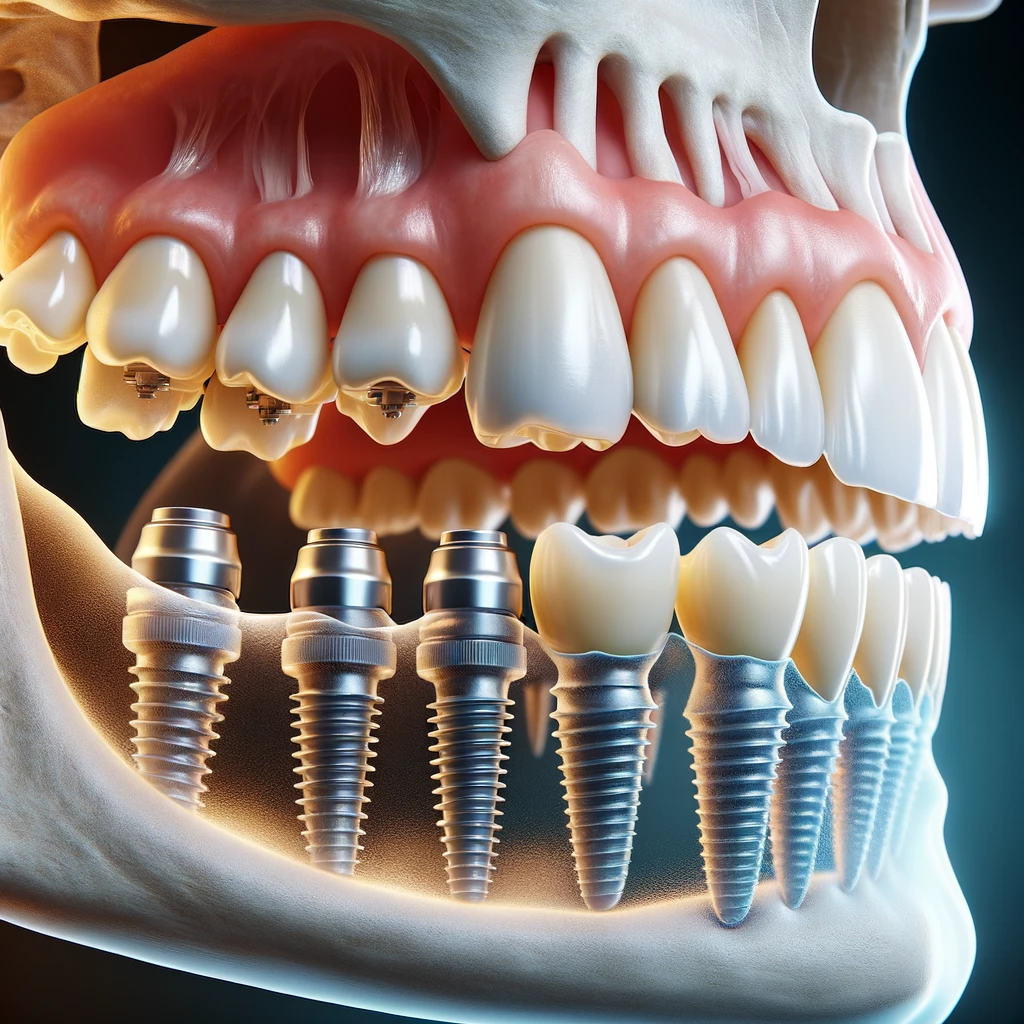The smart Trick of Dental Sense That Nobody is Discussing
Table of Contents4 Simple Techniques For Dental SenseAn Unbiased View of Dental SenseThe Best Strategy To Use For Dental SenseThe Only Guide for Dental Sense
are clinical devices surgically implanted right into the jaw to bring back a person's ability to chew or their appearance. They supply assistance for artificial (fake) teeth, such as crowns, bridges, or dentures. When a tooth is lost because of injury or illness, a person can experience complications such as fast bone loss, defective speech, or changes to chewing patterns that cause discomfort.Dental implant systems are composed of an oral implant body and dental implant joint and may also include a joint fixation screw. Dental implants. The oral implant body is surgically inserted in the jawbone instead of the tooth's origin. The dental implant abutment is typically connected to the implant body by the joint fixation screw and extends via gums right into the mouth to support the affixed synthetic teeth
(https://disqus.com/by/dentalsense1/about/)Structure of The Oral Implant System selecting dental implants, talk to your oral provider concerning the prospective advantages and risks, and whether you are a candidate for the treatment. Points to consider: Your general health is a crucial aspect in establishing whether you are an excellent candidate for dental implants, how much time it will certainly take to recover, and the length of time the dental implant may stay in area.
Cigarette smoking may affect the healing process and reduce the long-term success of the dental implant. The recovery process for the implant body may take numerous months or longer, throughout which time you generally have a short-lived abutment in location of the tooth. the dental implant procedure: Thoroughly follow the dental health guidelines offered to you by your oral supplier.
Dental Sense Fundamentals Explained
Implant failure can lead to the need for another surgical procedure to deal with or change the dental implant system. Restores the capacity to chew Recovers aesthetic appearance Aids keep the jawbone from shrinking because of bone loss Maintains the health and wellness of the bordering bone and periodontals Helps maintain adjacent (close-by) teeth steady Improves quality of life Damage to surrounding natural teeth during dental implant placement Injury to the surrounding tissues throughout surgical procedure, such as sinus perforation Injury during surgical treatment (for instance, crack of surrounding jawbone) Inadequate function, such as seeming like the teeth do not attack together usually An experience that the tooth hangs or twisting in area resulting from a joint screw loosening up Implant body failing (looseness of the dental implant body) as a result of systemic infection, which might be most likely in individuals with unrestrained diabetes mellitus due to local infection in bone and periodontals supporting the implant body because of delayed healing, which may be more probable in patients that smoke Difficulty cleaning up the gums around the implant, causing inadequate dental health Neglected gum condition Post-surgical feeling numb because of nerve impingement or damage Constantly alert healthcare suppliers and imaging professionals that you have oral implants before any magnetic resonance imaging (MRI) or x-ray treatments.
FDA is not knowledgeable about any unfavorable occasions reported for MRI or x-ray procedures with oral implants. Oral implants systems are typically made from materials that adhere to global consensus standards of the International Company for Standardization (ISO) or ASTM International. These criteria have details of what makes a safe material.

A dental implant is a framework that changes a missing out on tooth. With screw-like gadgets, the surgeon inserts an implant into the jawbone, and it acts as an anchor for a man-made tooth, called a crown.
Dental Sense Can Be Fun For Anyone
Some people are not qualified for oral implant surgery. It is for dental cosmetic surgeons to operate on people with: acute illnessuncontrollable metabolic diseasebone or soft cells disease or infectionIf these issues are dealt with, a person can have the surgical procedure. In, oral doctors avoid operating on individuals with: If individuals with any of the above undergo oral implant surgical procedure, there is a higher threat of the dental implant failing.

Dental implant surgery is a customized procedure. Offer you time to heal. Attach the message and final crown, bridge or denture.
Next, your specialist will carefully place the oral implant right into your jaw. Finally, your surgeon will reposition your gums and close the laceration with stitches. If your dental implant is near the front of your mouth, your dentist will make a momentary tooth for you to use up until you recover. In this way, you won't have a gap in your smile while you recoup.
The Greatest Guide To Dental Sense
Your provider can inform you what to anticipate in your scenario. During the recovery phase, your jawbone needs to fuse to the dental implant. This procedure, called osseointegration, is crucial for security and long-lasting success. This process can take anywhere from 3 to nine months. Sometimes, it might take longer.
When your implant heals, your dental expert can attach the abutment (tiny adapter post) and your final reconstruction (crown, bridge or denture). This usually takes about one hour to finish and might call for a second minor surgical procedure. You shouldn't feel any type of discomfort during your oral implant procedure since your supplier will certainly make use of medication to numb your periodontals.